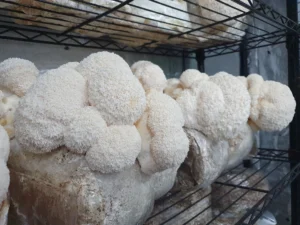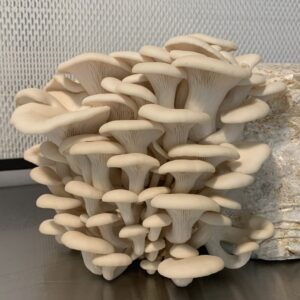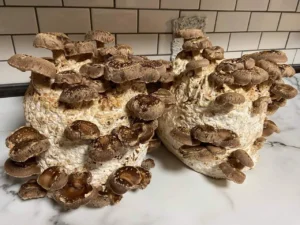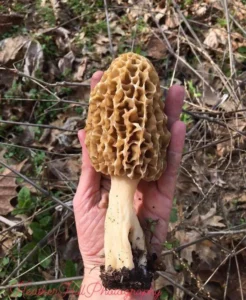5 Most Profitable Mushrooms to Farm
The Most Profitable Mushrooms to Farm: Demand, Yield, and Profitability Explained

Which Mushroom is Very Profitable? Mushroom farming has gained popularity globally due to its high return on investment, low startup costs, and increasing demand for fresh and exotic mushrooms in culinary, medicinal, and wellness industries. Among the vast types of mushrooms, some stand out as exceptionally profitable because of high market demand, fast growth cycles, long shelf life, and lucrative pricing.
In this in-depth guide, we’ll answer key questions related to mushroom profitability, demand, yield, shelf life, and farming choices to help you determine the best mushroom type to grow for maximum profit.
Which Mushroom is Very Profitable?
When considering profitability in mushroom farming, multiple factors come into play, including:
-
Market demand
-
Growth cycle and time to harvest
-
Cost of cultivation
-
Yield per square meter
-
Shelf life and storage ease
-
Wholesale vs. retail pricing
1. Lion’s Mane (Hericium erinaceus)
Lion’s Mane is increasingly becoming one of the most profitable mushrooms to grow. It’s not only popular in culinary markets for its seafood-like texture and flavor, but also highly sought after for its cognitive and neurological health benefits. In the wellness industry, Lion’s Mane is marketed in powdered and capsule forms, commanding premium prices.
-
Wholesale price: $10–$20 per pound
-
Retail price: Up to $30 per pound
-
Growth time: 3–4 weeks
-
Challenges: Requires a bit more care in humidity control
2. Oyster Mushrooms (Pleurotus spp.)
Oyster mushrooms are ideal for beginner and small-scale farmers because of their:
-
Fast growth cycle (can be harvested in 3–5 weeks)
-
High yield per substrate
-
Low input cost
-
Versatility in color and variety
-
Excellent market demand
Their profitability lies in their scalability and low operational cost. Depending on the strain, some types can yield more per kilogram of substrate, increasing overall profit margins.
-
Average wholesale price: $4–$8 per pound
-
Retail price: $8–$12 per pound
3. Shiitake Mushrooms (Lentinula edodes)
Known for their umami flavor and dense texture, shiitake mushrooms are highly profitable in gourmet and medicinal markets.
-
Higher initial setup required (especially if using logs)
-
Slower growth compared to oyster mushrooms (8–12 weeks)
-
Shelf life is better (7–14 days refrigerated)
They command higher prices and appeal to high-end chefs and organic markets.
-
Retail price: $10–$16 per pound
4. Morel Mushrooms (Morchella spp.)
Morel mushrooms are among the most expensive mushrooms globally, often fetching $200–$500 per pound dried, but they are extremely difficult to cultivate commercially.
Due to their complexity and specific environmental needs, morels are generally foraged or grown under very controlled, niche farming systems.
What Mushroom Makes the Most Money?
The mushroom that makes the most money depends on the business model: whether you’re selling fresh, dried, processed, or supplement-grade mushrooms. Here’s a breakdown:
| Mushroom | Fresh Price (per lb) | Dried Price (per lb) | Profit Potential | Notes |
|---|---|---|---|---|
| Morel | $30–$50 | $200–$500 | Very High | Hard to cultivate |
| Lion’s Mane | $10–$20 | $100–$150 | High | Used in nootropics |
| Oyster (Blue, Pink, King, Pearl) | $5–$12 | $20–$30 | Moderate–High | Easy to grow |
| Shiitake | $8–$16 | $40–$80 | High | Medicinal value |
| Cordyceps | N/A | $1000+ | Very High | Extremely niche market |
If you’re looking for a sustainable, scalable, and accessible option, Oyster mushrooms are the top pick. If you want premium pricing and are ready to enter the health supplement market, Lion’s Mane or Cordyceps may offer more long-term value.
Which Mushroom Has the Highest Demand?
Global trends show a clear rise in demand for both culinary and medicinal mushrooms.
High-demand mushrooms include:
-
Button Mushrooms (Agaricus bisporus) – White and brown variants dominate grocery stores.
-
Oyster Mushrooms – Particularly popular among vegetarians, chefs, and in Asian cuisine.
-
Shiitake Mushrooms – High culinary and medicinal value.
-
Lion’s Mane – Explosive growth in demand due to cognitive benefits.
-
Cordyceps and Reishi – Demand is rising in the health supplement market.
Among these, Oyster mushrooms arguably have the highest demand, particularly in urban farmers’ markets, restaurants, meal-kit services, and supermarkets.
Which Color Oyster Mushroom is Best?
Oyster mushrooms come in various colors and types, and the “best” often depends on your local market preference. However, some standout varieties are:
1. Pearl Oyster (Pleurotus ostreatus)
-
Most common and easiest to sell
-
Mild taste, widely accepted
-
High-yielding
2. Blue Oyster (Pleurotus ostreatus var. columbinus)
-
Hardy, grows well in cooler temperatures
-
Strong umami flavor
-
Popular with chefs for texture
3. Pink Oyster (Pleurotus djamor)
-
Beautiful and eye-catching; excellent for farmers markets
-
Grows fast, but shelf life is short
-
Great for stir-fries
4. Golden Oyster (Pleurotus citrinopileatus)
-
Delicate texture
-
High visual appeal
-
Slightly fruity aroma
5. King Oyster (Pleurotus eryngii)
-
Meaty stem, gourmet-grade
-
Slow to grow, but highest priced among oysters
-
Longer shelf life
In terms of marketability and price, King Oyster and Blue Oyster varieties often perform the best.
What is the Highest Yielding Oyster Mushroom?
Pearl Oyster (Pleurotus ostreatus) is widely regarded as the highest-yielding variety, especially when grown under optimized conditions. Some strains of Pearl Oyster can yield:
-
Up to 150–200% biological efficiency (BE), meaning 1 kg of dry substrate can yield 1.5–2 kg of mushrooms.
Other high-yielding types:
-
Blue Oyster (also robust and suitable for cold climates)
-
Phoenix Oyster (Pleurotus pulmonarius) – thrives in hot weather
-
King Oyster – lower yield but higher value per kg
How Long Can Oyster Mushroom Last?
Shelf life is a key consideration in profitability. Fresh oyster mushrooms are delicate and prone to spoilage.
Shelf Life of Oyster Mushrooms:
-
Fresh, refrigerated (1–4°C): 5–7 days
-
Vacuum sealed and refrigerated: Up to 14 days
-
Dried mushrooms: 6 months to 1 year in sealed packaging
-
Frozen (after blanching): 3–6 months
Among different colors, Pink and Golden Oysters have the shortest shelf life (2–4 days), while King Oyster mushrooms can last up to 2–3 weeks in refrigeration due to their denser structure.
What is the Most Expensive Mushroom to Farm?
Cordyceps militaris
Cordyceps are highly valuable due to their use in traditional Chinese medicine and adaptogenic supplements. However, they require:
-
A sterile lab environment
-
Controlled substrate (rice or silkworm larvae)
-
Complex incubation and harvesting
The result: $1000+ per kilogram of dried Cordyceps.
While not ideal for beginners, experienced growers can make significant profits from small-scale, high-margin production.
Other Expensive Options:
-
Morels – Wild-harvested or complex to cultivate
-
Truffles – Require oak or hazel trees, take years to grow
-
Reishi (Ganoderma lucidum) – Used in teas and tinctures
Which Farming is Most Profitable?
In the context of low-input, high-yield agriculture, mushroom farming is among the most profitable ventures, especially for small landowners or urban farmers.
Here’s why:
-
Low space requirement (vertical farming possible)
-
Fast crop cycles (3–6 weeks)
-
Year-round production
-
Organic, health-conscious consumer demand
-
Opportunities in value-added products (powder, dried, tinctures)
If scaled correctly, mushroom farming can produce a gross income of $100,000+ per acre annually, depending on the type grown and the market served.
Advantages of Mushroom Farming
1. High Return on Investment (ROI)
Low startup costs and fast crop cycles lead to rapid payback and sustainable income.
2. Small Space Requirements
Mushrooms can be farmed in basements, shipping containers, or small greenhouses.
3. Environmental Sustainability
Mushroom farming uses agricultural waste like sawdust, straw, and coffee grounds.
4. Fast Harvesting Time
Most gourmet mushrooms mature in 3–5 weeks.
5. High Market Demand
Growing awareness about healthy eating and plant-based diets is boosting demand.
6. Value-Added Product Potential
Dried mushrooms, powders, teas, and supplements open up additional revenue streams.
7. Multiple Harvests from One Substrate
Oyster mushrooms especially allow for 2–3 flushes (harvests) from a single grow bag.
Conclusion
If you’re looking to start mushroom farming, Oyster mushrooms are the best starting point due to their fast growth, ease of cultivation, high yield, and market demand. For those willing to invest more in equipment and research, Lion’s Mane and Cordyceps offer exceptional returns in wellness markets. Meanwhile, Morels and Truffles remain high-value but require patience and specialized methods.
For sustained profitability, consider diversifying your offerings, exploring value-added products, and staying current with consumer trends. With the right knowledge and strategy, mushroom farming can be a highly rewarding venture — both financially and environmentally.
Profitable Mushroom
Profitable Mushroom
Profitable Mushroom
Profitable Mushroom
Profitable Mushroom
Profitable Mushroom
Profitable Mushroom
Profitable Mushroom
Profitable Mushroom
Profitable Mushroom
Profitable Mushroom
Profitable Mushroom
Profitable Mushroom
Profitable Mushroom
Profitable Mushroom
